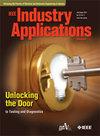HBA-LightGBM: Honey Badger Algorithm With LightGBM Model For Solar Irradiance Forecasting
IF 4.2
2区 工程技术
Q2 ENGINEERING, ELECTRICAL & ELECTRONIC
引用次数: 0
Abstract
The precise forecasting of solar energy holds significant importance for photovoltaic power plants, facilitating early engagement in energy auctions and cost-efficient resource planning. Due to the intermittent nature of solar irradiance, statistical models often fall short, giving an edge to machine learning models for more accurate forecasting. This article introduces an ensemble learning approach, the Light Gradient Boosting Machine model (LightGBM), that not only takes less computational time but also improves the forecasting performance. A two-stage dimensionality reduction approach is adopted that involves Mutual Information as a filter-based feature selection method and Autoencoder as a deep neural-based feature extraction approach to set the optimal features in order to avoid the problem of overfitting. Furthermore, the outliers present in the optimal features obtained are treated by their forecasted value by the Random Forest method. The performance of LightGBM models directly depends on their architectures and hyperparameters. To handle this problem, a swarm evolutionary optimization algorithm called the Honey Badger Algorithm, is applied to optimize the network architecture. The performance of the proposed method is investigated using two datasets collected from the National Renewable Energy Laboratory. The experimental results validate the superiority of the proposed method in comparison to other benchmark models.基于LightGBM模型的蜜獾算法预测太阳辐照度
太阳能的精确预测对光伏电站来说具有重要意义,有助于尽早参与能源拍卖和成本效益的资源规划。由于太阳辐照度的间歇性,统计模型往往不足,这给机器学习模型提供了更准确预测的优势。本文介绍了一种集成学习方法——光梯度增强机模型(Light Gradient Boosting Machine model, LightGBM),它不仅节省了计算时间,而且提高了预测性能。为了避免过拟合问题,采用了两阶段降维方法,其中Mutual Information作为基于滤波器的特征选择方法,Autoencoder作为基于深度神经的特征提取方法来设置最优特征。此外,对得到的最优特征中存在的异常值采用随机森林方法进行预测值处理。LightGBM模型的性能直接取决于它们的架构和超参数。为了解决这一问题,采用蜜獾算法对网络结构进行优化。利用国家可再生能源实验室收集的两个数据集对所提出方法的性能进行了研究。实验结果验证了该方法与其他基准模型的优越性。
本文章由计算机程序翻译,如有差异,请以英文原文为准。
求助全文
约1分钟内获得全文
求助全文
来源期刊

IEEE Transactions on Industry Applications
工程技术-工程:电子与电气
CiteScore
9.90
自引率
9.10%
发文量
747
审稿时长
3.3 months
期刊介绍:
The scope of the IEEE Transactions on Industry Applications includes all scope items of the IEEE Industry Applications Society, that is, the advancement of the theory and practice of electrical and electronic engineering in the development, design, manufacture, and application of electrical systems, apparatus, devices, and controls to the processes and equipment of industry and commerce; the promotion of safe, reliable, and economic installations; industry leadership in energy conservation and environmental, health, and safety issues; the creation of voluntary engineering standards and recommended practices; and the professional development of its membership.
 求助内容:
求助内容: 应助结果提醒方式:
应助结果提醒方式:


